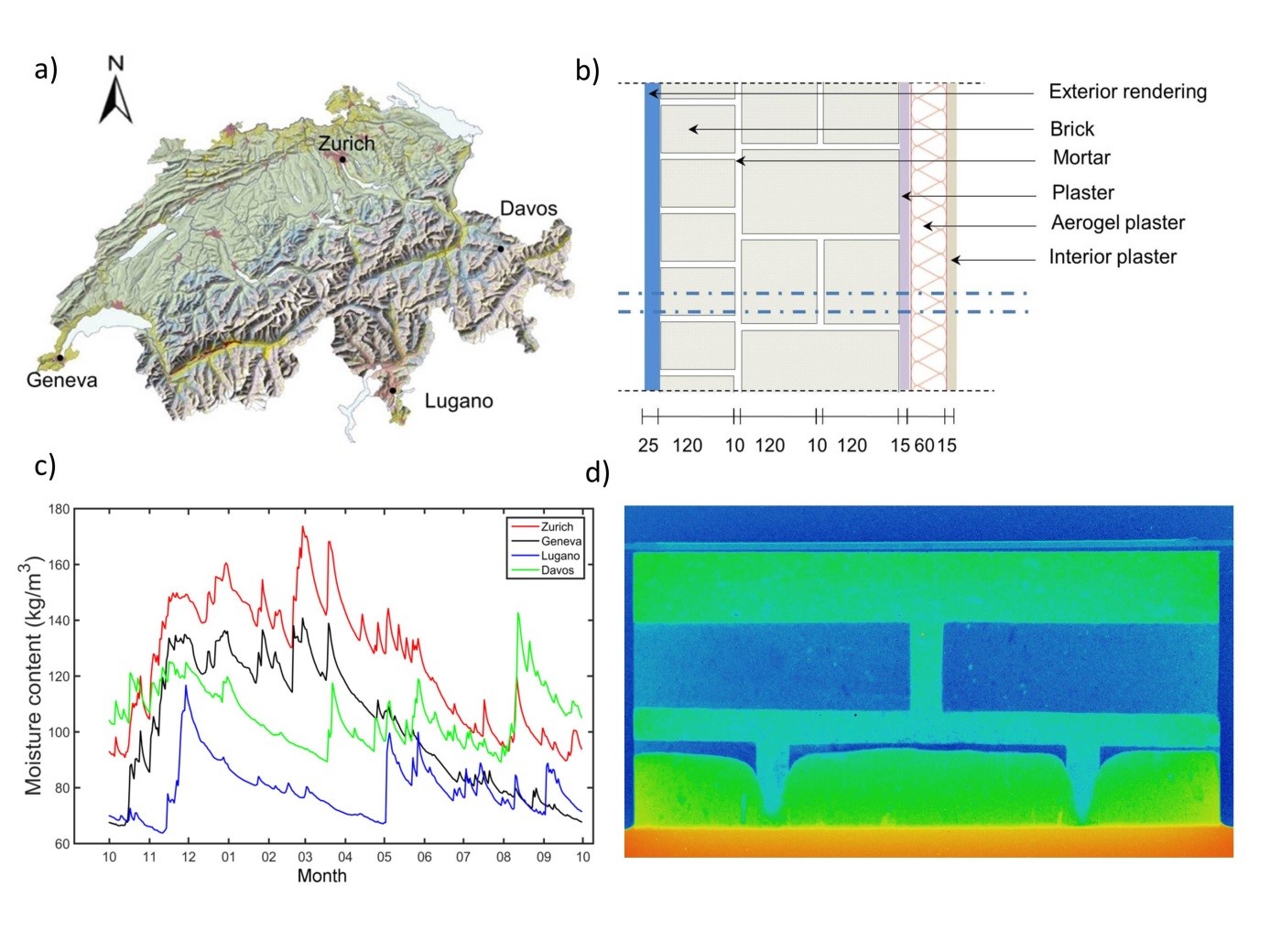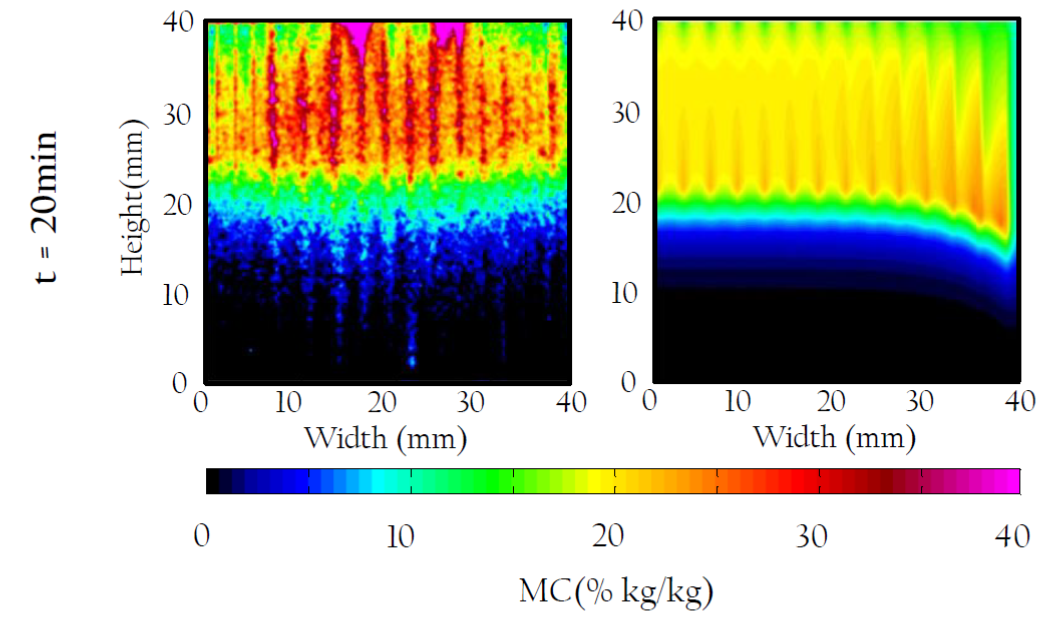Hygrothermal and durability behavior of building components
The building sector in Switzerland accounts for a large part of the energy use and CO2 emissions and there is a high potential of energy saving in retrofitting of (historical) buildings. Renovation measures are developed with the aim of minimizing the energy consumption. These measures focus on the improvement of the building envelope while at the same time recognizing the integration of renewable energy and optimization of equipment and its control functions. The study also includes the control of the moisture damage risk, either biodeterioration or mechanical (e.g. freeze-thaw).
The behavior of porous materials undergoing environmental loading or industrial process requires that the hygric, thermal and mechanical (HTM) behavior is considered in a coupled manner.
A comprehensive framework uses a fully coupled poromechanical approach. Heating of moist wood is simulated and the model is validated with moisture content distribution acquired through neutron imaging.

Publications
Zhou X, Derome D, Carmeliet J. Robust moisture reference year methodology for hygrothermal simulations. Building and Environment. 2016;110:23-35.
Zhou X, Derome D, Carmeliet J. A new procedure for selecting moisture reference years for hygrothermal simulations. Bauphysik. 2016;38:361-5.

